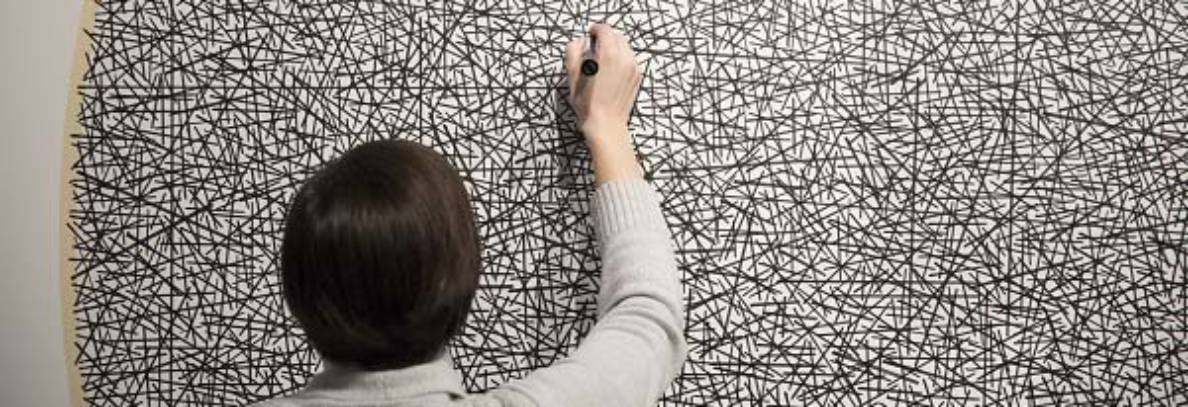Summary of work for Week 3:
- Critique of Stillness exercise.
–
1.Look at all the material and watch the videos below.
2. Defenestration Assignment: Make an image of your action and post the image on the blog.
Conceptual Video Art:
WATCH:
If conceptually informed artworks are ones in which an idea determines the work. You can think of some of the works below as a response to a simple, one sentence instruction.
Watch this video by Lee Walton below.
If you had to sum up this action in one instructional sentence or formula it would be something like:
Use your hands to feel a diverse range of things in the city.
Notice he takes the common expression “Getting a Feel for Things” literally in this work, and feels things. See how he uses common expressions, and simple instructions as a formula for creating in the following videos.
If conceptually informed artworks are ones in which an idea determines the work, as opposed to the artist’s masterful technique, or the perfect handling of materials. In fact, when you follow directions, things might even turn out badly, things can break down, fail, fall apart. There is tremendous tension in this – when we really don’t know how things are going to go. Watch Jon Sasaki play with attempting to do something, and the possibility (and sometimes the reality) of failing, falling, or otherwise destroying everything.
Jon Sasaki:
Ladder Climb:
http://www.jonsasaki.com/index.php/work/ladder-climb/
Dead End, Eastern Market, Detroit:
http://www.jonsasaki.com/index.php/work/dead-end-eastern-market-detroit/
Lenka Clayton:
Human Beings. 1-100 (2006)
“This is first in a series of four films – People In Order – commissioned by the UK’s Channel 4 in 2006. The concept behind our films was simple: we asked ourselves if you can reveal something about life by simply arranging people according to scales. Three minutes is a very short time to communicate something – perhaps too short to tell a story, or to get to know a character – so we wanted to make this series by setting ourselves some very straightforward rules, and then following them through over a long trip. The rules had to be simple so it would take the audience virtually no time to understand them. We established what scales we’d look at, and then chose how each film would be framed. Then it was a case of getting in a campervan and driving round Britain, filming as many people as we could over 4 weeks in February, coping with microphones crackling and our camera refusing to work.
The experience was exhausting but also life affirming. In our whole trip we were struck by how happy people were to help. Only a handful of our shoots were arranged in advance. We relied instead on the kindness of strangers – and we found that everywhere, from deprived urban estates to rural aristocrats.
The resulting films are like a list of government statistics where the citizens they are referring to have broken out from behind the figures on the page. The people on the screen stop us from seeing them as numbers. Even in single second bursts there are worlds of personality stretching out in front of us. The films are really about our awe at how big life is, infinite in its variety, even when it seems just normal to each of us living it.” Lenka Clayton and James Price – 2006
LOOK:
Here are some John Baldessari instruction pieces – used as assignments for students at Cal Arts from 1970. Notice how they sometimes play with language, or satirize artistic tropes. They sometimes read like eccentric proposals for science experiments, and suggest game like systems for working.
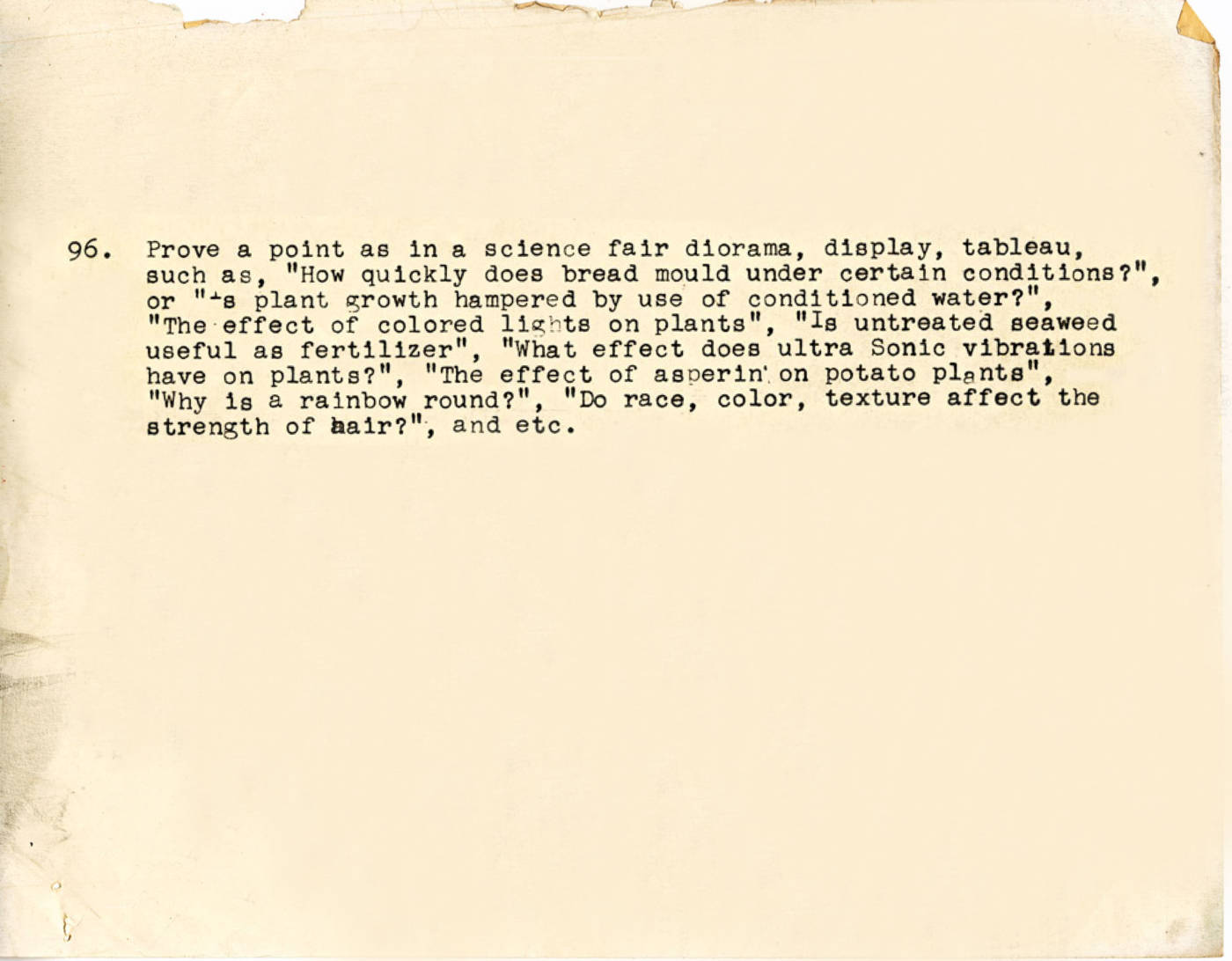
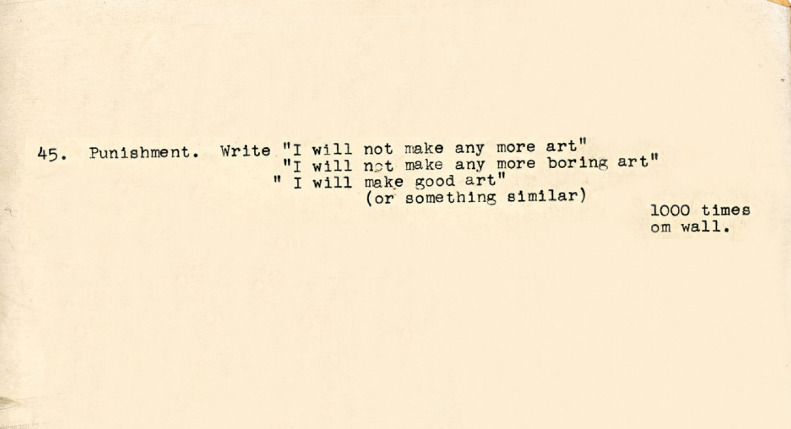
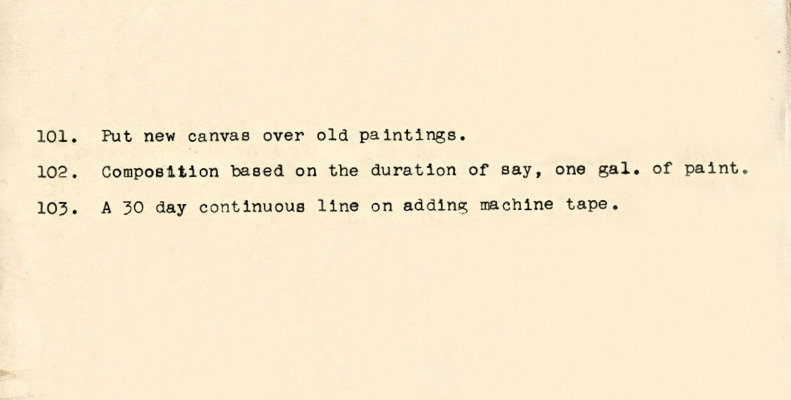
WATCH:
John Baldessari: Video from Art 21
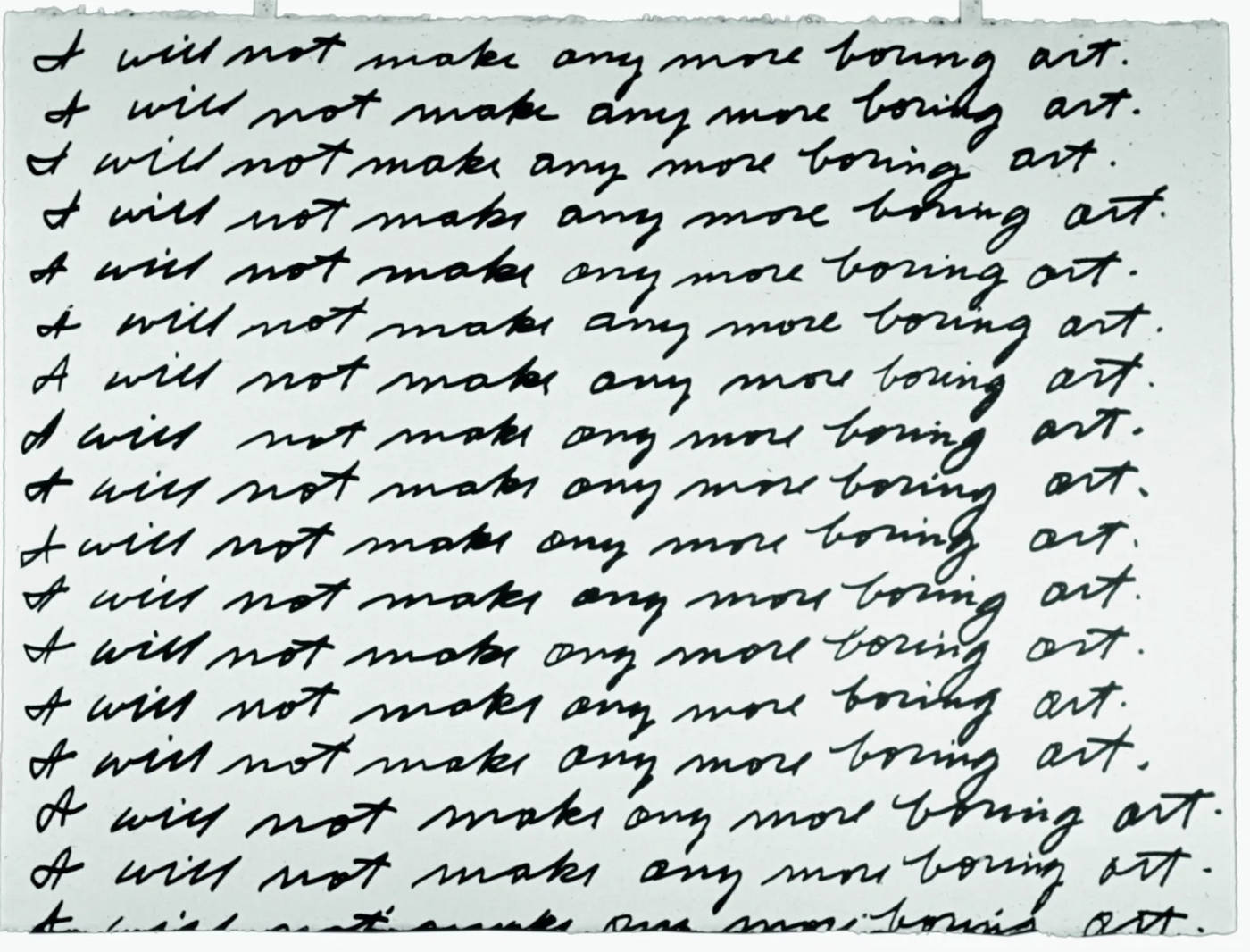

Have a look at this John Baldessari image, where he assigns himself a task to complete the work. The titles often give you a sense of the instruction he used to start:

Throwing Three Balls in the Air to Get a Straight Line (Best of Thirty-Six Attempts), 1973
Complete set of twelve offset lithographs in colours, on coated stock paper, with title and justification pages
DAVID HORVITZ:
MAKE: You will follow an instruction developed by John Baldessari (1970) – as the system for generating a work. This is one of my favourites:
Defenestrate objects. Photograph them in mid-air.*
This means throw something out the window, and photograph it in the air. Post your image on the blog, with a short description.
Do tests of various objects, and see when the results are most interesting. Consider how floating or falling or being subjected to weather affects your material. What new meanings do the gesture, and the conditions bring to your object? Think of this as an eccentric experiment. Photograph your results. Post some work in progress and tests.
Finally, select the best of your many test shots – as a unique work. It may be an individual image, or a pair, or a grid. Choose what you must – to evoke the clearest, most concise sense of your meaning. Include a short description of why you chose this image. Use the highest resolution image possible, you may want to print the work in the future.
*YOU MUST BE SAFE – Do not throw something out of a high rise balcony – even a coin can be dangerous when it hits the ground – or risks hitting a passing person/animal/vehicle/property. Only do this in a situation where you are CERTAIN you can throw a benign object SAFELY out of a window with no danger to anyone or anything below. Make sure the scene is clear. Try to solve the health and safety constraints in the most creative way you can. If you don’t have access to a low window – throw something feather light. Or – simply throw something into the air from the ground, and photograph it. Solve the instruction SAFELY even if it isn’t exactly a real “defenstration”.
We will discuss a few good examples of your work in the next class huddle.
